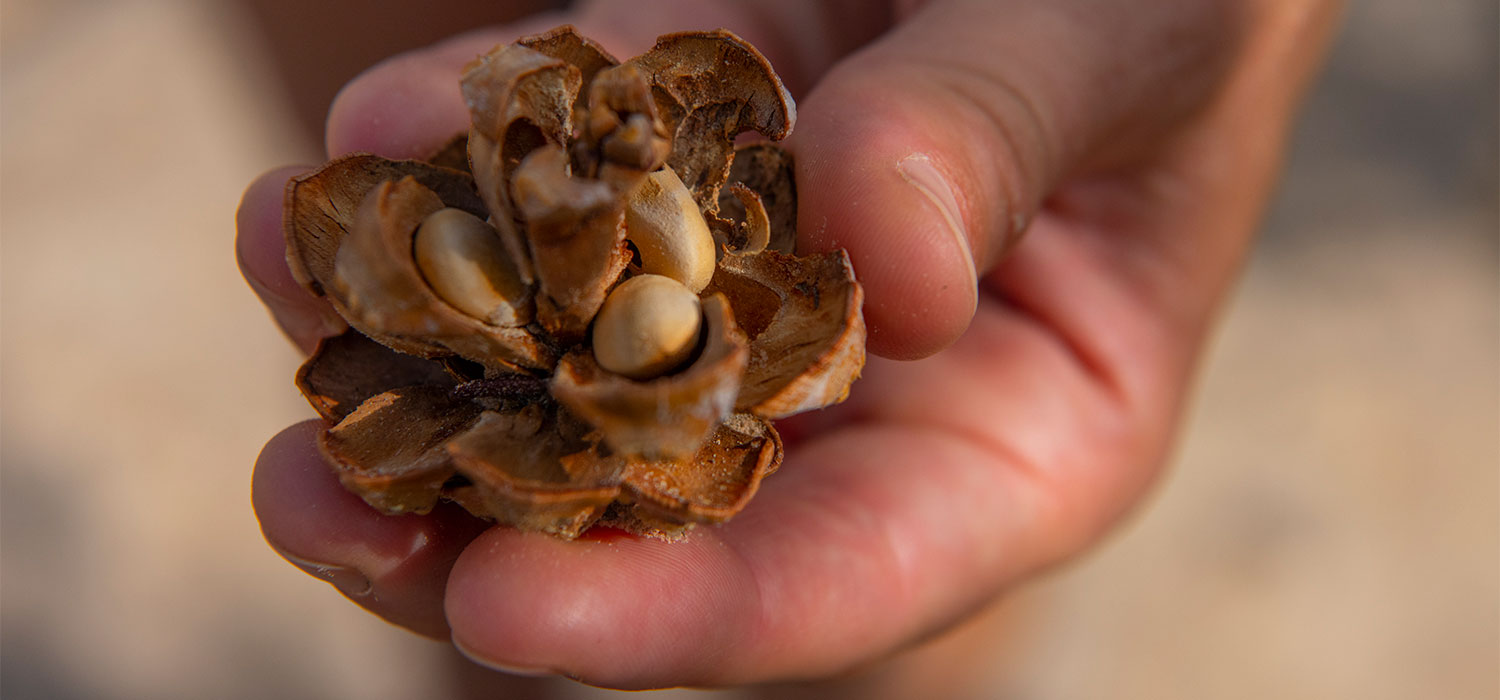
BY LYLE BALENQUAH
For the members of the 13 tribes who form the Grand Canyon Tribal Coalition, Baaj Nwaavjo I’tah Kukveni – Ancestral Footprints of the Grand Canyon National Monument is recognized as a landscape that contains markers of Indigenous culture and history. We believe we have lived upon these lands since time immemorial, and our connections to them are rooted in the lifeways of our ancestors.
We still see evidence of their lives within the archaeological record as artifacts, which include ancestral settlements, ceramics, stone tools, textiles, and elaborate panels of rock writings. These are the metaphorical "footprints of the ancestors," intentionally left behind as testimony of their time in the sculpted sandstone canyons and mesas. Western archaeologists have designated them with names such as "Archaic," "Cohonina," "Patayan," and "Anasazi." However, from an Indigenous perspective, Western science only tells one part of the story. The tribes maintain their own individual histories and their connections reflect the diversity of the natural landscapes.
 Pictograph panel in Baaj Nwaavjo I'tah Kukveni – Ancestral Footprints of the Grand Canyon National Monument. AMY S. MARTIN
Pictograph panel in Baaj Nwaavjo I'tah Kukveni – Ancestral Footprints of the Grand Canyon National Monument. AMY S. MARTIN
Some, like the Hopi and Zuni, trace their origins and migration paths from the Grand Canyon through the surrounding regions to their present locations. For the many Paiute bands and tribes of the lower Colorado River, age-old songs commemorate physical and spiritual journeys undertaken by the ancestors through lands that are now included in the monument. The Diné and Yavapai-Apache tribes continue to journey to these lands to conduct ceremonies of healing. The Havasupai and Hualapai tribes still reside on their ancestral territories within and surrounding the Grand Canyon. It is with this history in mind that the tribes recognize these landscapes as part of their homelands, regardless of current reservation boundaries.
The tribes developed lifeways uniquely adapted to the various environments, acquiring knowledge including medicine, technology, architecture, language, and arts. Some tribes followed the seasons, adapting to the availability of food and water across this vast and arid region. Others settled in areas where it was suitable to practice agriculture based around the cultivation of corn, squash, and beans. All of the tribal groups carry knowledge of where to gather and harvest plants, minerals, and other materials, as well as hunting grounds for deer, elk, and bighorn sheep. Many of these areas remain in use by tribal members through their continued traditional practices.
 A bighorn sheep in the east section of the monument. Bighorn sheep climb steep cliffs out of the Grand Canyon onto monument lands. ANDREW ORR
A bighorn sheep in the east section of the monument. Bighorn sheep climb steep cliffs out of the Grand Canyon onto monument lands. ANDREW ORR
The watersheds of the region, including rivers, springs, and underground aquifers, also hold central importance for the tribes, not only as water sources for themselves, but as a part of a healthy, natural landscape. The Hopi perspective considers springs to be living entities that breathe and exhale moisture, a metaphysical connection between the spiritual world of ancestors and the natural world of their descendants. The phenomena of naturally occurring springs and other water sources are proof that greater forces exist in the physical world we inhabit. The monument designation provides further protection for these watersheds from future impacts of uranium mining, which has a long and harmful history affecting the health of local tribes.
There are also spiritual connections that Indigenous peoples maintain with the land. This often involves journeys back to ancestral homelands to conduct prayers and meditation among the sagebrush plains, juniper-covered mesas, and high-elevation forests. Many of these prayers seek to maintain balance, harmony, and the well-being of all things in the universe.
 Projectile point. U.S. FOREST SERVICE, SOUTHWESTERN REGION, KAIBAB NATIONAL FOREST
Projectile point. U.S. FOREST SERVICE, SOUTHWESTERN REGION, KAIBAB NATIONAL FOREST
It is these histories and traditions that tribal people work to maintain and share, not just within our own communities, but also in broader conservation efforts. While some tribal people may not consider themselves "environmentalists" in the mainstream sense, our enduring relationship with these lands requires us to advocate for their protection and preservation. From elected tribal leaders engaged in formal government consultation, to the tribal members practicing traditional subsistence ways, the lessons of the land and our ancestors continue to guide our efforts.
As an archaeologist, I am fortunate to have worked in areas of the monument. As I traverse the landscapes of my ancestors, I think often of their presence, and it surrounds me. I see it tucked into alcoves as granaries and dwellings. I find it lying on soft sand as sherds and lithics. I stand before panels of rock writings, intrigued by what messages they relayed to their creators and people of the time. I continue to pay respect to my ancestors. I do so in the hopes that by acknowledging their existence, they will acknowledge mine. I follow these faint "footprints" back in time, eager to experience holy ground where spirits dwell.
 Lyle Balenquah works as an archaeologist and outdoor guide throughout the Southwest. Follow his work online at fte-studio.wordpress.com.
Lyle Balenquah works as an archaeologist and outdoor guide throughout the Southwest. Follow his work online at fte-studio.wordpress.com.
EDITOR'S NOTE: The views expressed by Advocate contributors are solely their own and do not necessarily represent the views of the Grand Canyon Trust.

Also in this issue:
For tribes, many plants have a name, a story, and a use handed down throughout the generations. Learn more ›